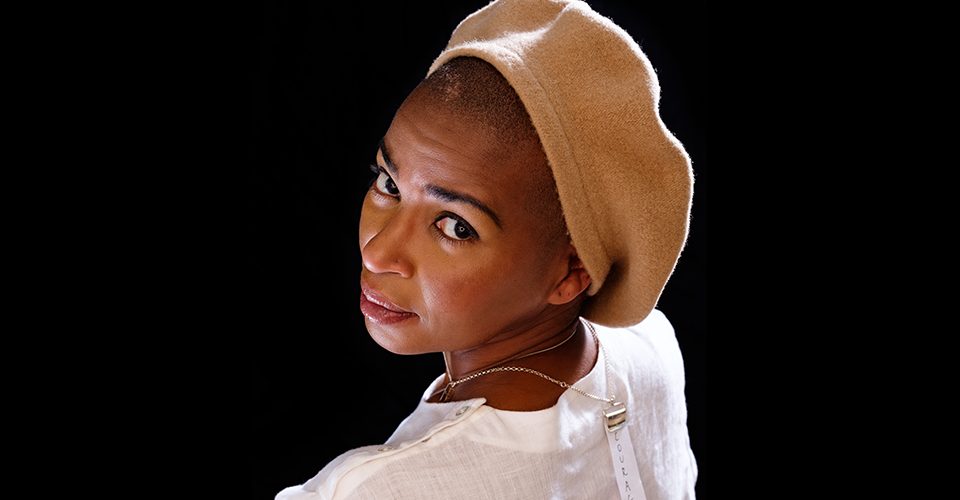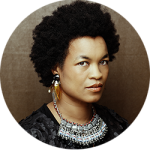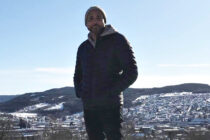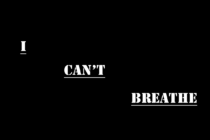It takes a lot to cut through the cacophony of media these days.
On May 1st 2016, in front of a parade of neo-nazis, TESS ASPLUND raised her fist in defiance. A journalist took a picture. Shockwaves reverberated around the world.
The parade was a demonstration by the NMR, an extreme right group whose quick advancement, especially among white male supporters, has made a mockery of Sweden’s worldwide reputation of moral superiority on the ideas of tolerance and equality.
Tess Asplund has a certain determined quality which is highly admirable. Tess is Sweden’s answer to a modern day Rosa Parks. This is in the sense that an impulse and a seemingly small gesture of “I’ve had enough!” resistance created a spark that was literally heard around the world.
No one who’s seen it was unmoved by the image of tiny Tess. All 163 centimeters and 55 kilograms of her. Fist raised a la Mandela. Alone, facing a wave of Neo-nazis. The image went viral because that simple act of courage resonated strongly with us.
I spoke with Tess soon after the media storm around her erupted, and just after Trump had won the election in the US, but I consciously wanted to let the dust settle. In my heart, although I know Tess had been on the front lines of protest in Stockholm long before, I didn’t want the attention to be a trend that people soon forgot about. I wanted it brought up again and again to remind ourselves that each one of us, through any small act of resistance to injustice, advances the rest of us.
when my daughter asks me if we can move, I ask her “to which planet?”
What is your background and what brought you to activism?
I think it started in my teenage years. I kept hearing the word “n*****” and stuff. There were a lot of skinheads running around Gamla Stan / Old Town, and me and my friends were there fighting against them. This was in high school. So from day one I remember thinking “This was not OK.” I was a little shy, but my adoptive parents were activists. I remember being with them as a little girl at a Free Nelson Mandela rally. I also remember being in a store and wanting to buy some apples and my mother saying, “No, we can’t buy those apples because they’re from South Africa…you know…Nelson Mandela…apartheid.”
What is the downside of activism?
The negative side? Getting threats. People calling me in the middle of the night. I don’t answer my phone if I don’t recognize the number.
How do you handle the threats? Psychologically and physically?
For me, I think it makes me stronger. It’s like “Oh yeah! Come on! You’re sitting there in the middle of the night shouting that they’re going to rape me and kill my kids, and I’m like “Bring it on!” I also have very good police contact. They know about the threats and are working with me.
What is the upside of your activism?
I think the upside, especially after the picture made it outside of Sweden, is media calling and asking questions. That’s good because I can tell them that Sweden is not the cute, harmless little place that they think it is. I can tell them how horrible it is that we have the Sweden Democrats, whose party is growing and growing, supported by people like the NMR. I can tell them how racism affects the Afro-swedish population…like the little black boy who was Lucia in the ad, how outraged people were, the stir it created and how attacked his family was. I can also point out how people who have so much more than me should say something. Afro-phobia is rampant, and when my daughter asks me if we can move, I ask her “to which planet?” Because it feels like it’s the same everywhere. But I still think there is hope for the next generation.
With the election of Trump it feels like we have to protest even more. What are your recommendations for us to find the energy to keep protesting?
We have to protest. Because silence won’t help us. There’s a lot of people here who say [about the neo-nazis] “Oh, let them talk, let them demonstrate, be quiet (just ignore them)”. I’m not going to be f-in’ quiet. We have to raise our voices. We have to raise our fists. We have to show them that this is not ok.
What should we do for everyday resistance?
It’s easier to do simple things like, if in front of the supermarket you hear someone verbally abusing someone else, say one of the Romanian beggars, just say “Stop it!”. If in the subway you see somebody say something mean to a non-white person, say “Stop it!” Intervene when necessary. Civilkurage.
Civilkurage
You’ve been protesting for years. Why do you think your gesture went viral just at that moment?
I really don’t know. I remember I was so angry when they came [the neo/nazis NMR], I really didn’t think about it. It wasn’t planned.
How did you feel about that image going viral?
It was a lot, and it’s a lot still. All the media. There are so many anti-fascist sisters and brothers here that are fighting against racism and who do so much, and I want them to also get recognition. I want people abroad to realize that it’s not just me.
At the same time, I know that you’ve been protesting for a long time…on the streets…on social media…at rallies. So if this recognition was going to happen to someone, you would have the highest probability for recognition.
I also know you’d been looking for your mom for a long time. Because your image went viral, you had the chance to find her. Tell us what happened.
The protest was May 1, 2016 in Borlänge. David Lagerlöf (the photographer) uploaded the picture to his Facebook page that day. The second of May it was like chaos! BBC South America rang and wanted to know if I’m from Colombia. I said I was adopted from there and that I’d been looking for my birth mother for a while. Then the biggest news bureau from Colombia rang and wanted to do a live show from Sweden. Before the broadcast, the producers asked if I wanted them to help me find my mother. “Ah, Ja!” The only thing I had was her name, my orphanage and the year I was adopted. They took this information and broadcasted it the 5th or 6th of May. Nothing happened. And then Friday the 13th of May, around 11pm at night, I get an SMS from what I see is a Colombian number. I thought it was more media and I was really tired but I opened it. It said:
“Hello, my name is Cristian. I’m your brother and it’s our mother you’re looking for.”
I was shocked! And he knew nothing about me. He’s 8 years younger than me and knew nothing. He told me how it happened. He had been out traveling and came home the 12th. He lives near Mamma [birth mother]. His (and my) aunt rang and was hysterical. She said it was full of journalists outside her sister’s house. He asked what was going on. She said “Sorry. You have a sister. That’s her in the picture.” So he said to the reporters “I know you’ve spoken to my sister. What’s her number?”
What did you talk about that first time?
He was at work. He was like “Hi!” I was like “Hi!” His work mates stood and just stared. The crazy thing is that he’s a musician, like me. He’s an anti-fascist, like me. We’re so alike, it’s crazy! When were talking it’s like nothing had happened. That Christmas I got the chance to travel to Colombia with my Swedish family to meet my Colombian family,
What do you want to see as the results of your activism.
I want to talk about the everyday, structural racism that happens here. To show the real Sweden. Not just the false picture of the “innocent” reputation that Sweden has outside of Sweden.
I want to expose the falsehoods
Where everyone is blond and good-looking, no one is poor, everyone is equal, and everyone welcomes refugees?
Yes. I want to expose the falsehoods.
Do you think that after your image went viral people have gotten more courage to show this?
Let me say this. Before the picture. Nobody wanted to listen. After the picture, I can say all the things that I, you, and other people have said that nobody cared about before. But I can say those same things now and because there is a spotlight, people are more willing to listen. I can say it to the Daily News, to Washington Post, to Al Jazeera, to any media that comes along. I can say “This is how it is”. I can speak for us.
It is important for us at Krull to take up this thread again, to revisit that image and to talk about your activism. Because for us, it’s very important that it’s not seen as a trend. What the majority society can look at and dismiss as a trend in six months, is life for us. Even when the spotlights have been turned elsewhere, we will remain black. So it is vital that when we get a platform, whatever that might be, we have take advantage of the opportunity to advance our argument.
Yes. There are so many strong people who have been and are fighting right now. The fight continues. What I want is for the local Swedish media to not just be interested after something is picked up by international media. The only thing they seem to be interested in are car burnings and youth throwing stones. Otherwise there is no dialog with people living in the suburbs. Kom till orten! / Come to the suburbs!
What do you want to say about the upcoming elections?
I’m really worried. I really hope the SD [Sweden Democrat, extreme right party] doesn’t become as large as is being predicted.
And finally. In response to the sentiments around the election and with the tilt towards the extreme right, the fashion brand HOPE launched a campaign last week to show the diversity in Sweden and to get a discussion going about inclusion in the fashion business. One of the questions they asked us was: “Do you think fashion is / seems to be an open and inclusive place? If yes – how? If not – why?” How would you answer that?
Yes, absolutely! I feel fashion is not just about wearing clothes and walking around and showing off. Fashion and design have so much more in politics than some may admit. ✊?
[aesop_gallery id=”4529″ revealfx=”off” overlay_revealfx=”off”]
COVER LOOK:
jacket, pants and shirt HOPE
jewellery all SOFIA WEMAN
belt and satchel STYLIST’S ARCHIVE
photography + styling ANDREA DAVIS KRONLUND @daviskronlund
makeup EMELIE WOOD OLSSON @emeliewood
styling assistant YINKA LAWSON @yinki_l
model TESS ASPLUND @mariateresaasplund
BRANDS:
Boomerang, Casual Couture, Crude Boot Company, Eurosko, HOPE, Langaeble, Malin Henningsson, Nygårdsanna, Pellobello, Primeboots Leather Togs, Remake, Sofia Weman





